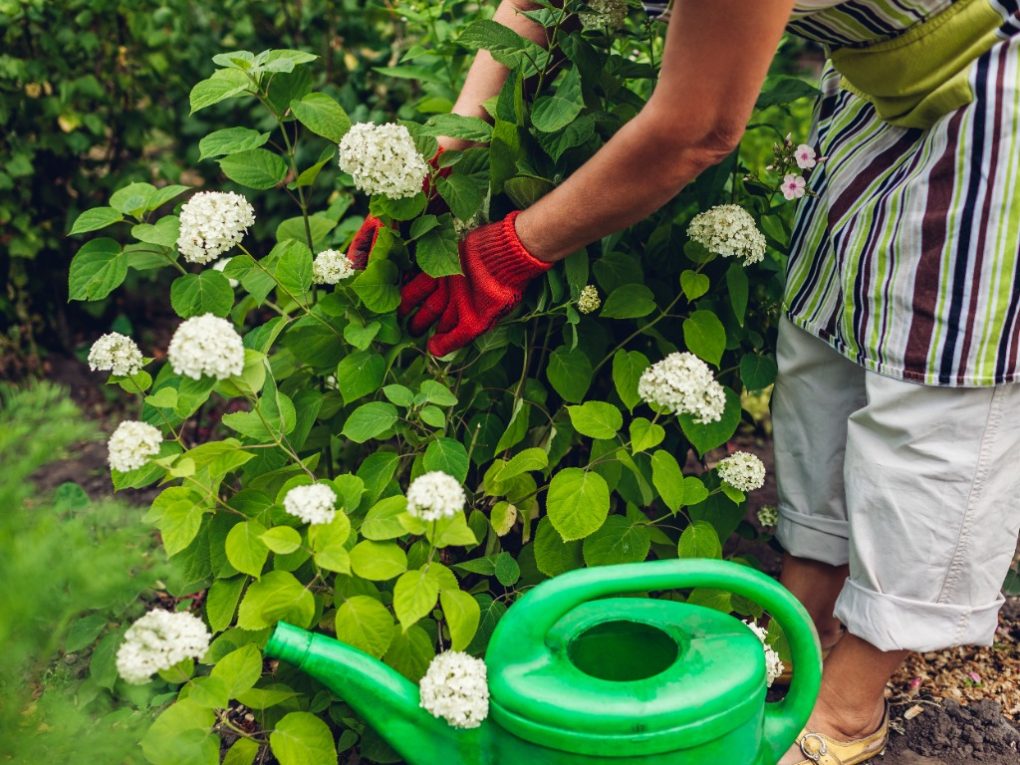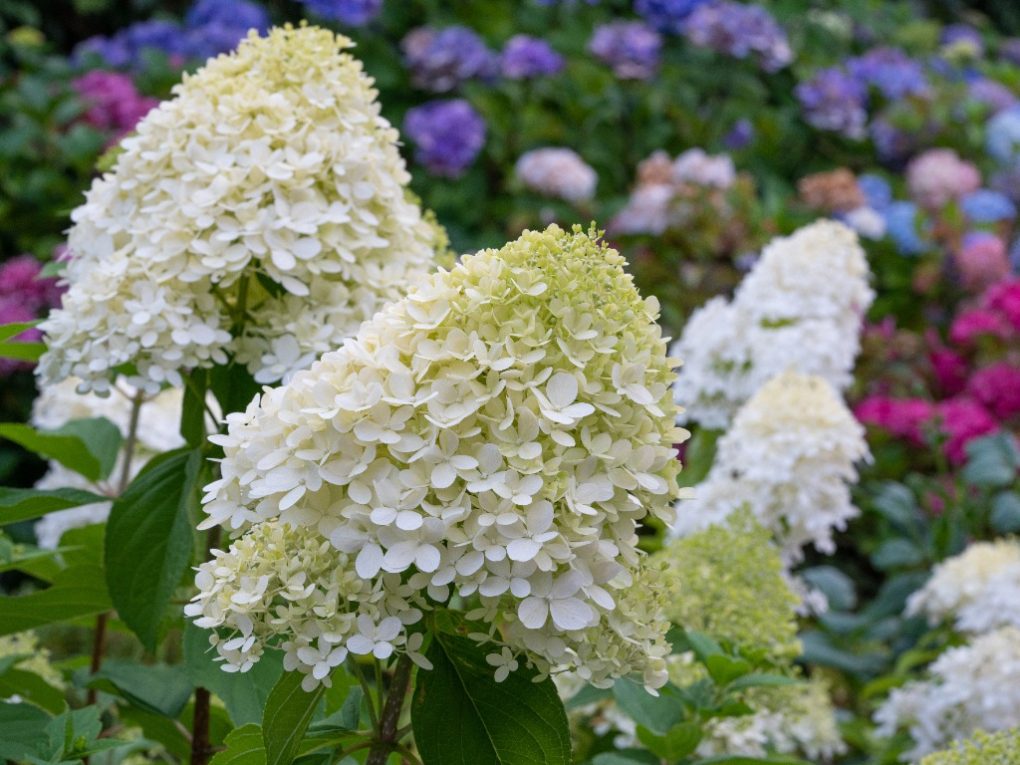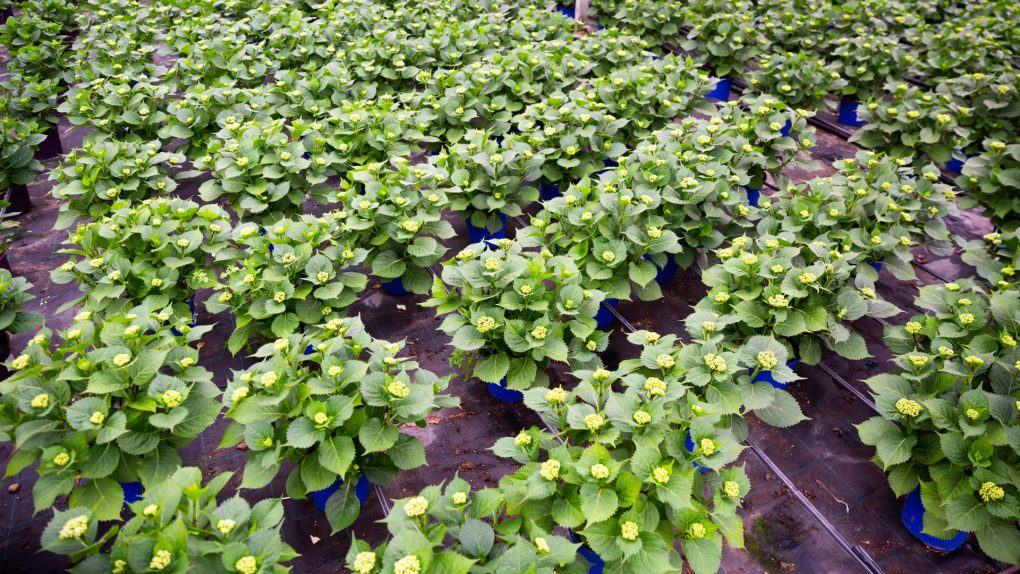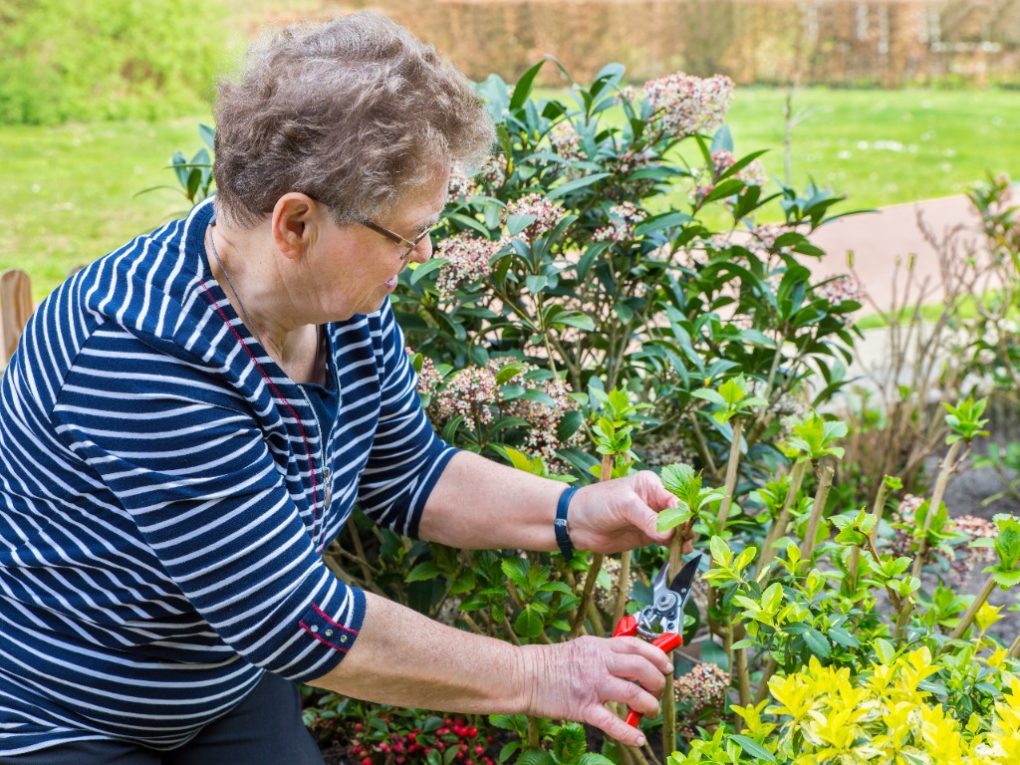Will Hydrangeas Thrive in Clay Soil?
Hydrangeas can thrive in clay soil, but certain considerations must be considered. Clay soil is known for its heavy, compact structure, which can cause drainage issues and restrict root growth. To improve growing conditions, before planting hydrangeas, you should amend clay soil with organic matter, such as compost, decomposed leaves, or well-rotted manure.

By adding organic matter, you can improve soil structure, provide nutrients, and enhance drainage, which in turn helps hydrangeas to establish and flourish. The optimal soil pH for hydrangeas ranges between 5.0 – 7.0, so test your soil and adjust its pH if needed. Regular monitoring and maintenance will ensure that your hydrangeas remain healthy and colorful.
Table of Contents
Understanding Clay Soil
Clay soil is a common type of soil that is composed of fine mineral particles. It is known for its ability to hold water and nutrients, making it a good choice for growing certain types of plants. However, it can also present some challenges for gardeners, particularly regarding drainage.
Characteristics of Clay Soil
Clay soil has several distinct characteristics that set it apart from other soil types. Some of these characteristics include:
● Texture: Clay soil comprises very fine mineral particles tightly packed together. This gives it a smooth, sticky texture that can be difficult to work with.
● Nutrient content: Clay soil is rich in nutrients, particularly minerals like calcium, potassium, and magnesium. This makes it a good choice for growing plants that require these nutrients.
● Water retention: Clay soil is known for its ability to hold water. This can be a benefit in dry climates, but it can also lead to problems with waterlogging and poor drainage.
● Compaction: Because of its fine texture, clay soil is prone to compaction. This can make it difficult for plant roots to penetrate the soil and access the necessary nutrients.
● Cracking: Clay soil can crack and become hard in hot, dry weather. This can make it difficult for water and air to penetrate the soil, harming plant growth.
Understanding these characteristics of clay soil is important for gardeners who want to grow plants, including hydrangeas, in this type of soil. By addressing the challenges of clay soil, gardeners can create a healthy growing environment for their plants.
Hydrangeas and Their Growth
Flowering shrubs such as hydrangeas can add color and texture to any garden. It is relatively easy for them to grow and they are able to thrive in a variety of soil types, including clay. This section explores the different types of hydrangeas and the growing conditions that are best for their growth.
Types of Hydrangeas
There are several types of hydrangeas, each with its unique characteristics. Here are a few of the most common types:
● Bigleaf hydrangea: This type of hydrangea is known for its large, round flower clusters ranging from pink to blue and prefers partial shade and moist conditions.
● Panicle hydrangea: This type of hydrangea has cone-shaped flower clusters that start white and turn pink as they mature. It prefers full sun to partial shade and can tolerate drier conditions than other hydrangeas.
● Smooth hydrangea: This type of hydrangea has large, white flower clusters and prefers partial shade and moist conditions.
● Oakleaf hydrangea: This type of hydrangea has cone-shaped flower clusters ranging from white to pink. It prefers partial shade and moist conditions.

Growing Conditions for Hydrangeas
When planting hydrangeas in clay soil, it’s important to properly prepare the soil to ensure the plant has the best chance of thriving. Here are a few tips for planting hydrangeas in clay soil:
● Prepare the planting hole: Make the hole two to three times wider than the root ball of the plant. Add some compost or other organic matter to help improve the soil structure and drainage.
● Watering frequency: Hydrangeas prefer moist soil, so water them regularly, especially during dry spells. Don’t overwater them, as this can cause root rot.
● Full sun vs. partial shade: Most hydrangeas prefer partial shade, as full sun can cause the flowers to wilt and the leaves to burn, however, panicle hydrangeas can tolerate full sun.
● Moist conditions: Hydrangeas prefer moist soil, but be careful not to let the soil become waterlogged. If the soil doesn’t drain well, consider planting the hydrangea in a raised bed or adding sand or perlite to improve drainage.
Tips: Hydrangeas can grow in clay soil if the soil is prepared properly and the plant is given the right growing conditions. By choosing the right type of hydrangea for your garden and following these tips for planting and care, you can enjoy beautiful, colorful blooms all season long.
Planting Hydrangeas in Clay Soil
Known for their beautiful flowering shrubs, hydrangeas add color and texture to any garden. However, they can be picky regarding soil conditions. Clay soil, in particular, can be a challenge for hydrangeas. But with the right preparation and care, you can successfully plant and grow hydrangeas in clay soil.
Preparing the Soil
Before planting hydrangeas in clay soil, it’s important to prepare the soil properly. Clay soil tends to hold moisture, leading to root rot and other problems. To improve drainage and create a better-growing environment for hydrangeas, follow these steps:
● Dig a hole two to three times wider than the root ball of the hydrangea plant.
● Remove any rocks, roots, or other debris from the hole.
● Mix in organic matter such as compost, manure, peat moss, or pine bark to help break up the clay and improve drainage.
● Consider adding wood ash or aluminum sulfate to the soil to make it slightly acidic, which hydrangeas prefer.
● Test the pH level of the soil to ensure it is within the appropriate range (5.0 to 8.0) for hydrangeas.
Amending the Soil
If your clay soil is particularly heavy or compacted, you may need to amend it further to create a better-growing environment for hydrangeas. Here are some additional steps you can take:
● Sand or perlite can be added to the soil to improve drainage and create air pockets.
● Consider adding bone meal or other fertilizers to provide nutrients for the plant.
● Avoid adding too much nitrogen, which can promote the growth of leaves at the expense of flower production.
● Do not over-fertilize your plants as this can lead to root burn and other problems.
Planting Hydrangeas in Raised Beds
Consider planting hydrangeas in raised beds if you have particularly heavy clay soil. This can provide better drainage and create a more favorable plant-growing environment. Here are some things to keep in mind:
● Use a well-drained soil mix that is slightly acidic.
● You may want to consider putting a layer of gravel or drainage material on top of the bed.
● Ensure the bed is deep enough to accommodate the root system of the hydrangea plant.
● Water regularly, but be careful not to over-water, as this can lead to root rot.
Following these tips, you can plant and grow hydrangeas in clay soil. With a little care and attention, your hydrangeas will thrive and provide beautiful blooms for years.

Caring for Hydrangeas in Clay Soil
Hydrangeas are beautiful flowering plants that can thrive in various soil types, including clay. However, caring for hydrangeas in clay soil requires extra attention to ensure they receive water, nutrients, and proper drainage.
Watering Hydrangeas in Clay Soil
Clay soil tends to hold onto water, leading to root rot and other issues if the soil becomes waterlogged. Therefore, it is important to monitor the soil’s moisture level regularly. Hydrangeas in clay soil require infrequent but deep watering, allowing the soil to dry slightly between watering sessions.
Fertilizing Hydrangeas in Clay Soil
Hydrangeas in clay soil can benefit from regular fertilization to provide nutrients and promote healthy growth. Aged manure or organic compost can be added to the soil to provide slow-release nutrients. Fertilizers with a balanced N-P-K ratio can supplement the soil’s nutrient levels. Therefore, following the manufacturer’s instructions for application rates and frequency is important.
Mulching Hydrangeas in Clay Soil
Mulching around hydrangeas in clay soil can help keep the soil cool, retain moisture, and prevent weeds from growing. Pine bark mulch is a good option for clay soil for proper drainage. The mulch should be applied in a 2-3 inches layer and kept away from the base of the plant to prevent root rot.
Pruning Hydrangeas in Clay Soil
Proper pruning can help maintain the shape and size of hydrangeas in clay soil and promote healthy growth and showy flowers. It is important to remove dead or damaged branches as soon as possible. For most hydrangea varieties, pruning should be done in late winter or early spring before new growth appears. Therefore, it is important to research the specific pruning needs of the grown hydrangea variety to ensure proper care.

Caring for hydrangeas in clay soil requires attention to watering, fertilization, mulching, and pruning. Following these guidelines, hydrangeas can thrive in clay soil and produce beautiful showy flowers.
Other Plants for Clay Soil
If your garden has clay soil, your plant choices could be improved. However, many beautiful and hardy plants thrive in clay soil. This section will explore some of the best plants for clay soil and tips for preparing clay soil for planting.
Plants for Clay Soil in North America
Many plants do well in clay soil in North America. Some of the most popular include black-eyed susan, daylily, big bluestem, forsythia, ribes, and weigela. These plants are all hardy and can withstand the heavy, compacted soil characteristic of clay.
Black-eyed susan (Rudbeckia hirta) is a beautiful, low-maintenance perennial that blooms from midsummer to early fall. It is easy to grow and can tolerate various soil types, including clay.
Daylilies (Hemerocallis) are another popular choice for clay soil. They come in various colors and can bloom for several weeks in midsummer. They are also very easy to care for and can tolerate many growing conditions.
Big bluestem (Andropogon gerardii) is a native grass well-suited to clay soil. It can grow up to 8 feet tall and has beautiful blue-green foliage that turns a rich copper color in the fall.
USDA Hardiness Zones for Clay Soil
When choosing plants for clay soil, it is important to consider your USDA hardiness zone. For example, some plants that do well in clay soil in one part of the country may not be suited to the growing conditions in another area.
For example, black-eyed susan is well-suited to clay soil in USDA hardiness zones 3-9, while daylilies can grow in zones 3-10. Big bluestem is native to the prairies of the central and eastern United States and can grow in zones 3-9.
Preparing Clay Soil for Other Plants
If you want to grow other plants in clay soil, there are several steps you can take to prepare the soil. One of the most important is to add organic material to the soil. This can include compost, leaf mold, or well-rotted manure. In addition, organic material helps to improve soil structure, allowing plants to develop roots and access nutrients.
Another option is to add soil amendments, such as gypsum or lime. These can help to break up heavy clay soil and improve drainage. However, testing your soil before adding any amendments is important, as too much can harm plants.
